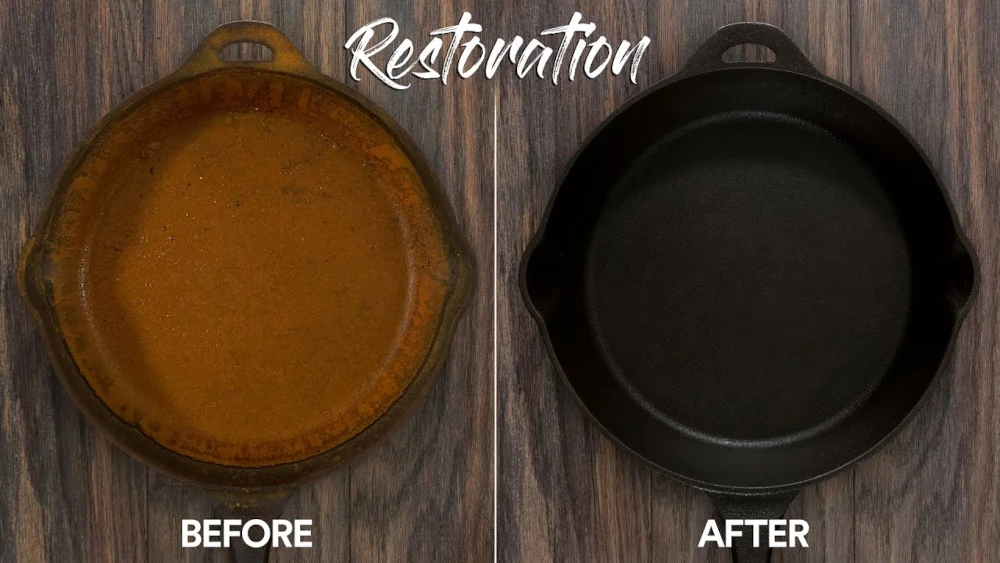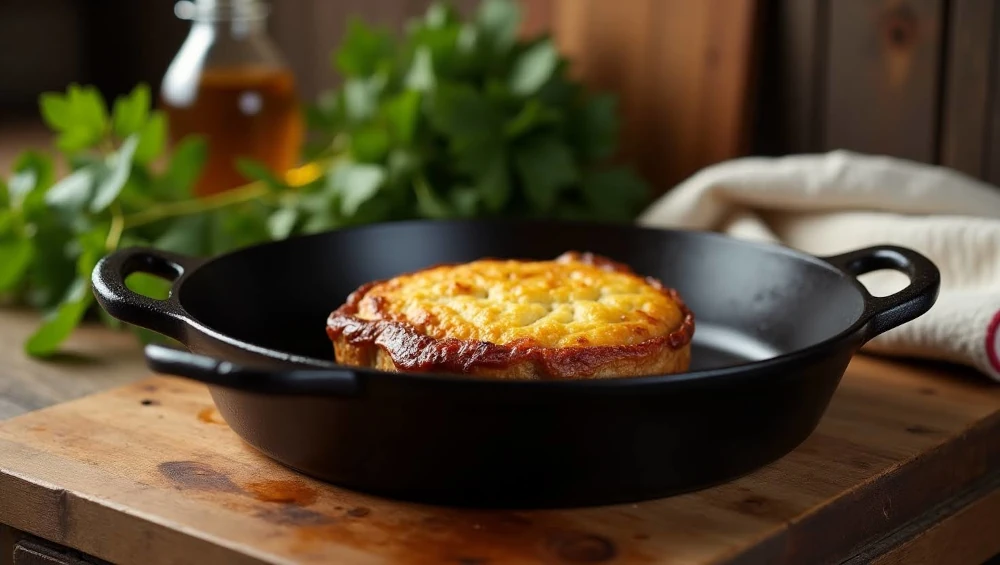Fastest Way to Remove Rust From Cast Iron

Cast iron cookware is prized for its durability, heat retention, and ability to impart flavor to food as it’s used over time. However, rust can be a common and frustrating problem for owners of cast iron cookware —mainly if it’s not properly cared for. Now, let’s talk about it for those dealing specifically with rust – but if you are not noticing rust in any shape or form, you might want to be thinking of what is the fastest way to remove the rust from cast iron but also how to keep that from returning.
In this blog, we will examine several ways to remove rust, answer several questions, such as how to get the rust off cast iron and provide tips for cleaning, seasoning, and maintaining your cast iron items.
Why Does Cast Iron Rust?
Cast iron rusts because it’s iron that is oxidized when it comes in contact with oxygen and moisture in the air. Things that cause rust are:
- After washing, leave the cast iron wet
- Keeping it in humidity-prone conditions
- Not seasoned the cookware well
The good news is that rust is treatable and preventable, even in small amounts, because moisture can cause it.
Fastest Way to Clean Rust from Cast Iron
The top Ways to find the Best method for rust removal that is effective and fastest are;
Soaking in Vinegar (Quick + Cheap)
Steps:
- Get a container that will hold the cast iron, and mix equal parts white vinegar and water.
- Soak for 1 hr max (pay attention — vinegar can ruin cast iron if it sits too long)
- Take off and scrub using a steel wool or scouring pad.
- Rinse very well and dry thoroughly right away.
- The estimated time is 1-2 hours.
- It’s high in effectiveness.
- This method is best for moderate rust.

Scrub with Salt and Potato (Fast and Natural)
Steps:
- Drizzle coarse salt (such as kosher salt) over the rusty surface.
- Halve a potato and use the cut side to scrub the salt into the rust.
- Oxalic acid in potatoes helps dissolve rust, and salt serves as an abrasive.
- Rinse, dry, and season.
- The estimated time is 30 minutes.
- It’s Effectiveness is Medium
- It’s best for light rust or spot treatments.
Baking Soda Paste
Steps:
- Combine some baking soda with water to form a paste.
- Apply and leave for 15 to 20 minutes for the rusted areas.
- Use steel wood or a brush to scrub.
- At last, rinse and dry it.
- The estimated time for this process is 1 hour
- Its effectiveness is medium
This method is best for Light surface rust
Electrolysis (Aggressive and Quick for Severe Rust)
Steps:
- Put cast iron in a plastic tub filled with water and washing soda.
- Create an electric current with a battery charger and sacrificial metal to lift rust.
- It is quick and effective for heavy rust but requires gear and caution.
- The estimated time needed for this method is 1–3 hours.
- It’s effectiveness is very high
- This method is ideal for heavy rust or restoration.
How to Remove Rust from Cast Iron — Simple Cleanup Hacks for Regular Care
And just as after rust removal, it needs to be properly cleaned. Here’s how to regularly clean your cast iron to prevent rust:
Avoid Soap: Treat with hot water and a stiff brush. A bit of mild soap is fine as long you rinse thoroughly.
Dry On-The-Fly: Heat up on a stove for a few minutes to evaporate moisture.
Oil After Cleaning: Coat it with a light layer of vegetable oil or cast iron conditioner to keep it safe.
How to Season Your Cast Iron After Rust Removal
Cast iron can regain its non-stick capabilities and protective coating once the rust is removed, but the cookware still requires seasoning.
Seasoning Steps:
- Set oven to 450°F (232°C) and let heat.
- Lightly coat all surfaces with vegetable oil.
- Bake upside down for one hour (with foil underneath to catch drips).
- Let cool inside the oven.
- Repeat 2–3 times for best results, particularly after heavy rust removal.
How to Prevent Rust: Best Practices
- Avoid Soaking: Do not soak cast iron in water.
- Completely Dry: Using heat to dry is the most effective way to remove every last trace of moisture.
- Oil Regularly — Lightly coat it with oil after every use.
- Store with Care: Store in a dry cabinet; if stacking, use paper towels to absorb moisture.
Alternate Rust Removal Products
- Rust Converters: Fluid products that chemically convert rust to protect the underlying metal.
- CLR(Calcium Lime Rust remover): Use in moderation; rinse thoroughly afterward.
- Commercial Cast Iron Cleaners: These are made to remove rust safely.
Tools You'll Need
Tools that are required for the removal of rust in cast iron are;
- Steel wool or scouring pads
- Coarse salt
- Potatoes or baking soda
- Vinegar
- Gloves (to protect hands)
- Towels for drying
- Oven for seasoning
Additional Tips
- Before using these methods, always test on a small area.
- Do not use it in the dishwasher; it has to take away seasoning and cause rust.
- If you are dealing with valuable antique cast iron, professional restoration may be worth the cost.

Conclusion
Rust might feel like the death knell of your cast iron cookware, but it’s typically a transitory situation. How to remove rust from cast iron — the fastest method of choice is based on how bad the rust is and the tools you have on hand. Soaks in vinegar, scrubs with salt, pastes with baking soda: simple, cheap, effective. If that fails, for bad rust, electrolysis will salvage even badly corroded cookware.
It will be back to its former glory, ready for many more years of cooking, once you clean it up and season it again properly. Rust won’t know what hit it with regular care.
FAQs
Is it safe to cook with slightly rusted cast iron?
No, wash off all rust before use. Rust can contaminate the flavor and safety of food.
How often do I need to season my cast iron?
Reseason every use, or at least once a month, for protection and performance.
What is the quickest way to remove rust at home?
One of the fastest and easiest household methods is a vinegar soak followed by steel wool scrubbing.
